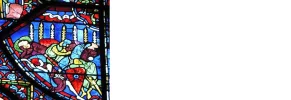- Time of past OR future Camino
- May 2023: Via Francigena, Lucca to Rome
I always enjoy when Compostela makes an appearance in a non-Camino related book. This time it was in Crusaders: The Epic History of the Wars for the Holy Land by Dan Jones (2019).
The chapter in question was following the life and journeys of Ibn Hamdis, a poet from Sicily who fled the island when it was conquered by the Normans. Ibn Hamdis joined the court at Seville under the al-Andalus "party king" Al-Mu'tamid. This would be sometime after 1060. At this time the author writes that there were three popular trends that were leading the rest of Europe to take more interest in Iberia: 1) the increasing number of Frankish knights who were joining the Christian King Alfonso VI's forces as mercenaries, 2) a push by Cluny monks to setup shop in Spain and bring the Mozarabs into the Latin rite, and 3) the increasing number of pilgrims on the road to Santiago.
Because the book focuses on knights, poets, and kings - and not so much on pilgrims - it offered a different perspective than other Camino-specific books I've read. Here's the passage:
"Pious laymen who wished to cleanse their souls of sin followed the penitential road to Galicia known as the Way of Saint James, which led to the shrine of the apostle, known as Santiago de Compostela: one of the holiest sites in the Christian world. This could be a dangerous journey: one French guidebook of the early twelfth century issued grave warnings of the deadly impurity of the river water beside the road, and the loose morals of the people who dwelled there, such as Navarrese farmers who "practice unclean fornication" with their mules and mares. But the journey was worth the discomfort. Miracles were frequently reported along the Way: soldiers' lances planted in Sahagún had grown leaves; Saint James had revived a traveler wrongly hanged for theft; he had healed a young man who had cut off his own penis in atonement for the sin of fornication. And in the distant past - it was rumored to have been in the year 834 or 844 - Saint James had supposedly appeared in armor at a battle against Spanish Muslims, helping Christian forces to victory - which earned him the nickname Santiago Matamoros - Saint James the Moor-slayer. "
The chapter in question was following the life and journeys of Ibn Hamdis, a poet from Sicily who fled the island when it was conquered by the Normans. Ibn Hamdis joined the court at Seville under the al-Andalus "party king" Al-Mu'tamid. This would be sometime after 1060. At this time the author writes that there were three popular trends that were leading the rest of Europe to take more interest in Iberia: 1) the increasing number of Frankish knights who were joining the Christian King Alfonso VI's forces as mercenaries, 2) a push by Cluny monks to setup shop in Spain and bring the Mozarabs into the Latin rite, and 3) the increasing number of pilgrims on the road to Santiago.
Because the book focuses on knights, poets, and kings - and not so much on pilgrims - it offered a different perspective than other Camino-specific books I've read. Here's the passage:
"Pious laymen who wished to cleanse their souls of sin followed the penitential road to Galicia known as the Way of Saint James, which led to the shrine of the apostle, known as Santiago de Compostela: one of the holiest sites in the Christian world. This could be a dangerous journey: one French guidebook of the early twelfth century issued grave warnings of the deadly impurity of the river water beside the road, and the loose morals of the people who dwelled there, such as Navarrese farmers who "practice unclean fornication" with their mules and mares. But the journey was worth the discomfort. Miracles were frequently reported along the Way: soldiers' lances planted in Sahagún had grown leaves; Saint James had revived a traveler wrongly hanged for theft; he had healed a young man who had cut off his own penis in atonement for the sin of fornication. And in the distant past - it was rumored to have been in the year 834 or 844 - Saint James had supposedly appeared in armor at a battle against Spanish Muslims, helping Christian forces to victory - which earned him the nickname Santiago Matamoros - Saint James the Moor-slayer. "












